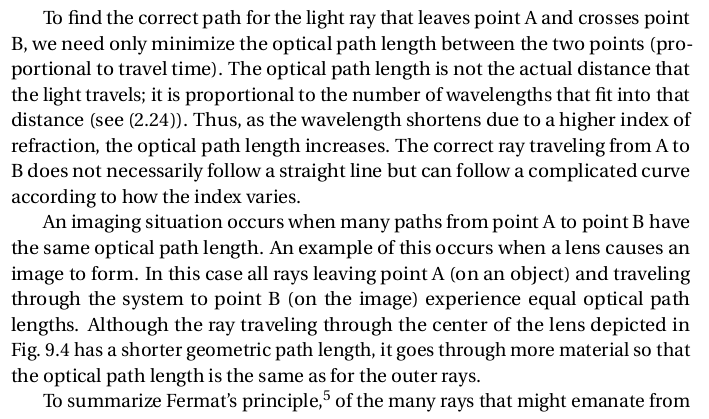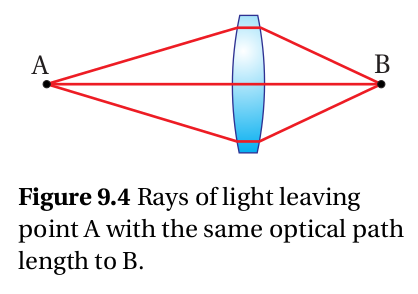假使從『量子光學』 Quantum optics
Quantum optics is a field of research that uses semi-classical and quantum-mechanical physics to investigate phenomena involving light and its interactions with matter at submicroscopic levels.[1]
……
Concepts of quantum optics
According to quantum theory, light may be considered not only as an electro-magnetic wave but also as a “stream” of particles called photons which travel with c, the vacuum speed of light. These particles should not be considered to be classical billiard balls, but as quantum mechanical particles described by a wavefunction spread over a finite region.
Each particle carries one quantum of energy, equal to hf, where h is Planck’s constant and f is the frequency of the light. That energy possessed by a single photon corresponds exactly to the transition between discrete energy levels in an atom (or other system) that emitted the photon; material absorption of a photon is the reverse process. Einstein’s explanation of spontaneous emission also predicted the existence of stimulated emission, the principle upon which the laser rests. However, the actual invention of the maser (and laser) many years later was dependent on a method to produce a population inversion.
The use of statistical mechanics is fundamental to the concepts of quantum optics: Light is described in terms of field operators for creation and annihilation of photons—i.e. in the language of quantum electrodynamics.
A frequently encountered state of the light field is the coherent state, as introduced by Roy J. Glauber in 1963. This state, which can be used to approximately describe the output of a single-frequency laser well above the laser threshold, exhibits Poissonian photon number statistics. Via certain nonlinear interactions, a coherent state can be transformed into a squeezed coherent state, by applying a squeezing operator which can exhibit super– or sub-Poissonian photon statistics. Such light is called squeezed light. Other important quantum aspects are related to correlations of photon statistics between different beams. For example, spontaneous parametric down-conversion can generate so-called ‘twin beams’, where (ideally) each photon of one beam is associated with a photon in the other beam.
Atoms are considered as quantum mechanical oscillators with a discrete energy spectrum, with the transitions between the energy eigenstates being driven by the absorption or emission of light according to Einstein’s theory.
For solid state matter, one uses the energy band models of solid state physics. This is important for understanding how light is detected by solid-state devices, commonly used in experiments.
───
觀點看『圖像方程式』 eikonal equation 推導之『假設』︰
波長 → 0
,此乃『高能光子』,粒子效應十分顯著。若非被侷限在極小空間中、特殊環境裡,可忽略其波動性。因此在巨觀近軸近似下,也不特別顧慮不同折射率界面間的『鏡面反射』 。由是應能知古代製作『好鏡子』亦很難耶!
Specular reflection
Specular reflection is the mirror-like reflection of light (or of other kinds of wave) from a surface, in which light from a single incoming direction (a ray) is reflected into a single outgoing direction. Such behavior is described by the law of reflection, which states that the direction of incoming light (the incident ray), and the direction of outgoing light reflected (the reflected ray) make the same angle with respect to the surface normal, thus the angle of incidence equals the angle of reflection 

Reflections on still water are an example of specular reflection.
……
Background
When light hits a surface, there are three possible outcomes. Light may be absorbed by the material, light may be transmitted through to the other side, or light may be reflected back. Materials often show some mix of these behaviors, with the proportion of light that goes to each depending on the properties of the material, the wavelength of the light, and the angle of incidence. For most interfaces between materials, the fraction of the light that is reflected increases with increasing angle of incidence 
Reflected light can be divided into two sub-types, specular reflection and diffuse reflection. Specular reflection reflects all light at the same angle, whereas diffuse reflection reflects in a broad range of directions. An example of the distinction between specular and diffuse reflection would be glossy and matte paints. Matte paints have almost exclusively diffuse reflection, while glossy paints have both specular and diffuse reflection. A surface built from a non-absorbing powder, such as plaster, can be a nearly perfect diffuser, whereas polished metallic objects can specularly reflect light very efficiently. The reflecting material of mirrors is usually aluminum or silver.
───
依此再推導出『費馬原理』︰
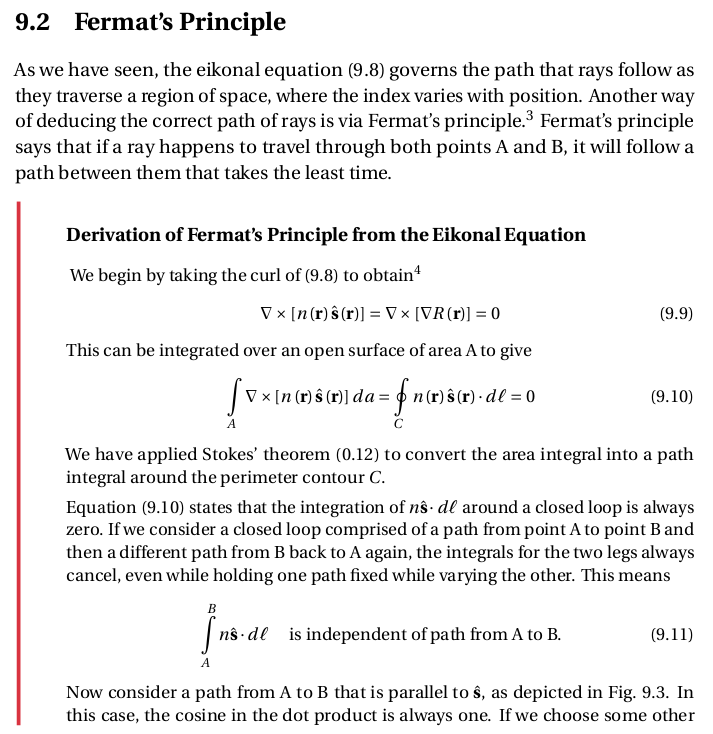
或當知『光程』 OPL optical path length 概念的重要性︰
In optics, optical path length (OPL) or optical distance is the product of the geometric length of the path light follows through the system, and the index of refraction of the medium through which it propagates. A difference in optical path length between two paths is often called the optical path difference (OPD). Optical path length is important because it determines the phase of the light and governs interference and diffraction of light as it propagates.
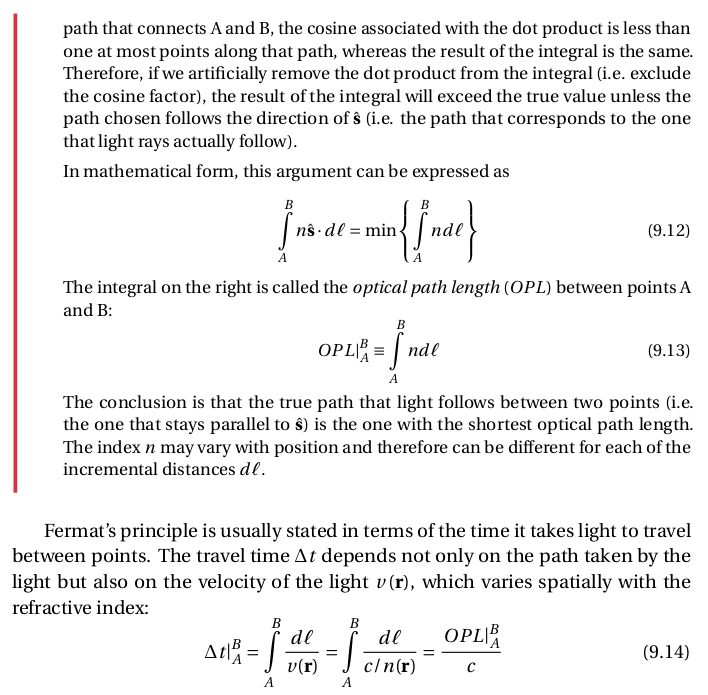
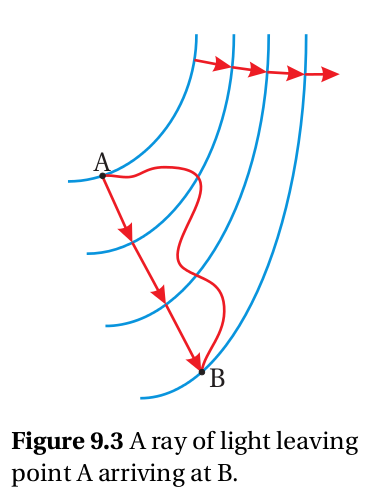
可以得『等光程』成像法則乎???
